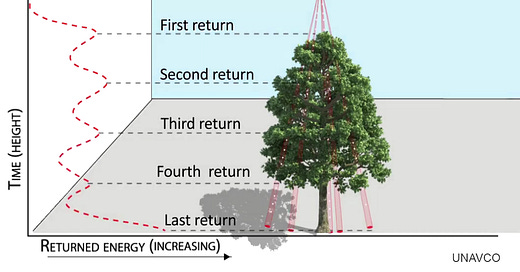Pacification refers to simultaneous military, political, and economic activities. It is used to protect, control, appease, or coerce civilians and to reform governments besieged by insurgency or external subversion. The concept has evolved to encompass not only the use of force but also diplomatic efforts to achieve peace and stability.
Policing refers to the department of government concerned primarily with maintenance of public order, safety, and health and enforcement of laws. It is also charged with prevention, detection, and prosecution of public nuisances and crimes. Policing is the work of the police force. It involves controlling or guarding a public event or area. Policing is carried out by a body of government employees trained in methods of law enforcement and crime prevention and detection and authorized to maintain the peace, safety, and order of the community.
Improving Battlefield Intelligence with Military UAV LiDAR:
Unmanned Aerial Vehicle (UAV) LiDAR combines the precision of Light Detection and Ranging (LiDAR) technology with the mobility of UAVs.
The integration allows for high-resolution geospatial mapping and reconnaissance. It is vital in military operations because it delivers accurate real-time terrain and intelligence data.
The tactical edge provided by UAV LiDAR ensures safer and more effective planning and execution in complex environments.
Radar and lidar help military leaders shoot for the high ground:
Radar, short for radiation detection and ranging, has long been a crucial technology in military operations. Using radio waves that bounce off objects, radar systems proved adept at recognizing and tracking objects from transmitter antennas and widely came into military use during World War II.
A primary military use for radar is in surveillance and reconnaissance. Radar systems monitor airspace, land, and sea areas to detect and track enemy movements -- including aircraft, ships, and ground vehicles. This constant monitoring aids in maintaining situational awareness and gathering vital intelligence.
Electromagnetic warfare or electronic warfare (EW) is warfare involving the use of the electromagnetic spectrum (EM spectrum) or directed energy to control the spectrum, attack an enemy, or impede enemy operations. The purpose of electromagnetic warfare is to deny the opponent the advantage of—and ensure friendly unimpeded access to—the EM spectrum. Electromagnetic warfare can be applied from air, sea, land, or space by crewed and uncrewed systems, and can target communication, radar, or other military and civilian assets.
Smart Ultrasonic Radar: Real-Time Object Detection and Tracking with IoT Integration (SUR): Ultrasonic radar, also known as ultrasonic sensors or sonar systems, is a technology that utilizes ultrasonic waves to detect and locate objects in its proximity. It is an evolution of radar technology that operates at frequencies beyond the range of human hearing, typically above 20 kHz.













Share this post